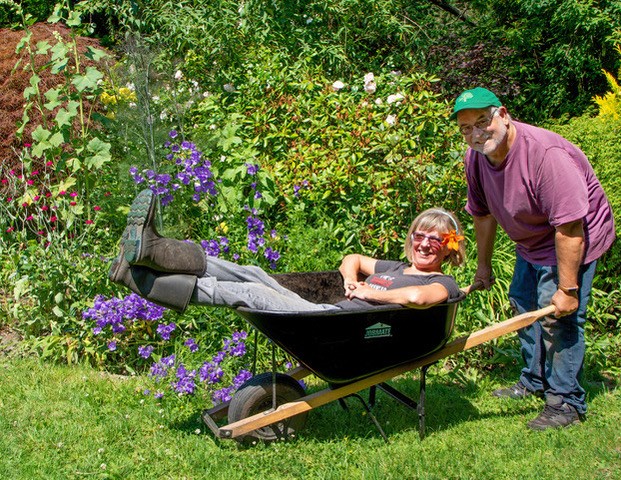Hubby and I were gazing out our kitchen window while enjoying a leisurely breakfast. Suddenly a swoop of about 30 birds dive bombed our gardens in the backyard.
It was crazy! The birds were moving so quickly it took us a bit to figure what kind of birds we had visiting our lush gardens. Finally the flock settled down amongst our plants feasting on their breakfast. We had house sparrows digging around all of our plants. Our garden was alive with motion from wings and beaks!
Wild Birds Unlimited recently posted a blog about fall migration of birds and gave some excellent tips on how to attract these creatures into your gardens.
According to the article, the arrival of fall brings a transition time for birds. During the summer months, the birds are busy nesting and raising their wee ones. Once fall arrives they are no longer raising families and weather changes in the areas they were habituating.
Like our recent arrival of the house sparrows, who gathered together to have more eyes searching for food and predators. The birds travel around learning each other’s alarm calls and foraging techniques such as searching up and down trees.
Interesting to note, Richmond is well-situated on migrating birds flight paths. Our very own Paulik Park is always alive with birds flying through with a foraging stop in the gardens of the Park. Over 38 species of birds have recently been counted by some local birders in Paulik Park.
Our very own backyard is a dynamic, varied landscape that at times can look a bit messy. We leave important seed heads on our plants to feed the wildlife. In amongst our perennial plants are raspberry bushes still producing delicious fruit. We have planned our garden around perennial plantings that attract pollinators and beneficial insects. We also have a waterfall water feature in our very small garden. Many birds, butterflies, little bees can be seen drinking from our fountain. Birds sit in the fountain to let the water run over them with wings flapping and feathers fluffing. Birds are attracted by the sound of running water and will pop in to investigate. We also have a full to the brim compost box that is a delight to birds of all types with places to hide and forage.
Some of the birds prefer to forage for food on the ground and some prefer more elevated food sources. Our house sparrows prefer the elevated food sources.
We tend to choose plants to feed our wildlife population rather than bird feeders (and hummingbird feeders). We bring our feeders when most of our plant material has died down. We have found that bird feeders attract rats and hummingbird feeders attract wasps. Best to let nature be their food source until the weather becomes cooler.
Should you choose to bring out your bird feeders now, make sure to clean and repair your feeders before installing them. It is always nice to have bird and hummingbird feeders close to your house so you get to enjoy our feathered friends close up. It is a good idea to move your bird feeders regularly to prevent a build up of the seed that falls from the feeder promoting surprise plants next spring.
When the weather becomes cooler keeping your food source regularly available will attract birds to continually visit your garden. Make sure to keep the food source fresh.
We were so delighted to see this large flock of house swallow choseour garden that my hubby snuck out and left a handful of high quality bird feed on the boards of our compost bin. He started a bird party! Swallows and chickadees galore hung around for the day to see what else we had in store.
Lynda Pasacreta is the current president of the Richmond Garden Club.
Richmond Garden Club along with some volunteers and with the help from Richard Kennedy of Richmond Nature Park, installed a dozen birdhouses in Paulik Park this spring because of the volume of different species of birds in the Park. Be sure to visit Paulik Park located on Heather Street just north of Blundell Road and look for our resident owls, flickers and many other song birds. For more information visit www.richmondgardenclub.ca.



